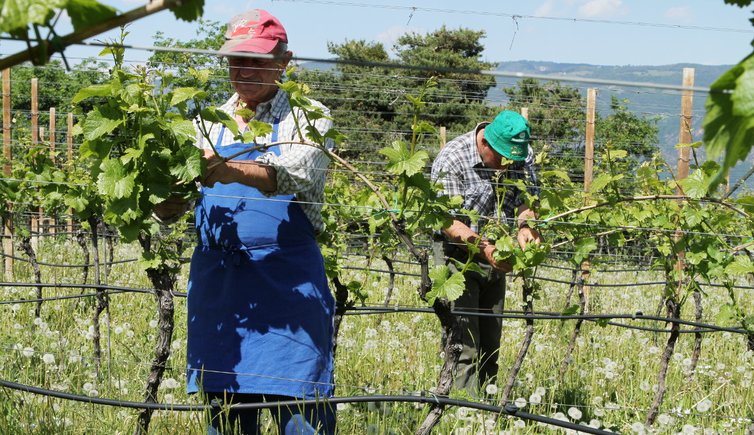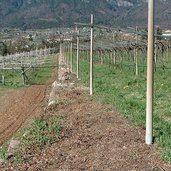The winegrower’s work begins in January with pruning the vines and ends with the storage of the grapes in late autumn
Image gallery: The wine year
Winter - January to March:
The work year of winegrowers starts with pruning in January, when most of the buds are cut from the one-year old plants and the plants are "firmed", that means freed from excessed vine shoots. In February and March - with an average temperature of 8 degrees C along the Wine Road - the remaining branches are tied on the wires. Before this work is done, the wires and posts in the vineyards are established and if necessary repaired. In the wineries, however, the first new wine is bottled in January.
Spring - April to June:
In April - with an average temperature of 12 degrees C - the grapevines "weep", which means that they dewater from the roots to the point where they were cut: A drop appears on the cut surface. In May and June - it is getting 5 degrees C warmer every month - new branches grow, which have to be protected from downy mildew, a dreaded plant disease throughout Europe. In the cellars, most of the wines from the previous year are bottled in June, as they have reached full maturity.
Summer - July to September:
In June and July - with an average temperature of 23 degrees C - dispensable shoots and leaves, which cast too much shadow are cut so that the grapes can ripe better. In August, dispensable grapes are removed and only one grape is left over on each shoot, a criteria for an excellent wine. In this period, hail can destroy the work of the last months. Vintage starts with the white grapes in lower altitudes at the beginning of September and lasts until mid-October in altitudes of more than 500 m a.s.l. Afterwards, the vine rests until the beginning of vegetation in March...
Autumn - October to December:
In October, the best berries are picked out in 2-3 cycles in order to guarantee the production of high-quality wines. With a vineyard area of 4,250 ha, the Wine Road covers a whopping 84% of the South Tyrolean vineyards. Most of the work in late autumn is done indoors: In November, wine and marc are separated after a fermentation period of 6 to 10 days and pumped into barrels. The marc called "Trester" - skins, seeds and stalks - is then used to produce the popular "Grappa" schnapps. Until mid-December, wine keeps fermenting in the barrels before it can be tasted for the first time.













































